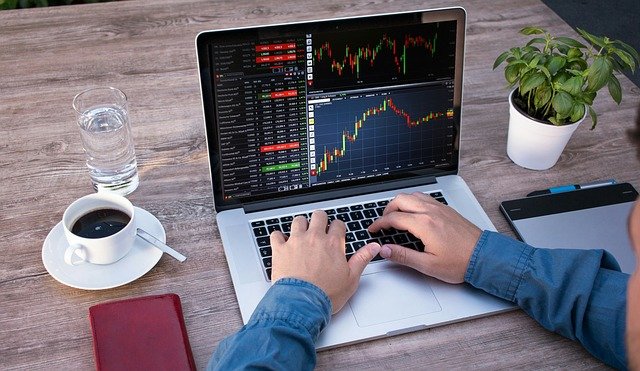One of the first benefits of forex trading that a trader is likely to encounter is the forex market’s greater liquidity than other marketplaces. According to the 2016 triennial report of the Bank of International Settlements, the most recent estimates show a daily traded volume of around $5.1 trillion.
WHAT IS IT, AND WHY IS IT IMPORTANT?
It refers to a currency pair’s capacity to be exchanged (bought/sold) on demand in the forex market. When you trade the most significant currency pairings, you do it on a very liquid market. However, you trade using the financial institutions’ available liquidity, which allows you to enter or exit the transaction (currency pair) of your choice.
Not every pair of currencies is liquid. In actuality, currencies’ liquidity tends to fluctuate depending on whether they are major, minor, or exotic pairings (including emerging market currencies). Forex liquidity decreases as traders go from major to minor pairs, then to exotic pairs.
High Liquidity:
A currency pair with high liquidity in the forex market may be purchased and sold in large amounts without experiencing substantial changes in its exchange rate (price level), for example, major currency pairings like the EUR/USD.
Other significant currency pairings to be aware of include:
- GBP/USD
- USD/JPY
- EUR/GBP
- AUD/USD
- USD/CAD
- USD/CHF
- NZD/USD
Low Liquidity:
A currency pair with low liquidity in forex cannot be purchased or sold in large amounts without causing significant changes in its exchange rate price level, for example, exotic currency pairings like the PLN/JPY.
3 SIGNS TO WATCH OUT FOR IN FOREX LIQUIDITY VS ILLIQUIDITY
Because the amount of buying or selling at any one time might fluctuate substantially, an illiquid market will exhibit chaotic fluctuations or gaps from a trader’s perspective. A market with excellent liquidity is also described as deep or smooth, and the price movement is likewise smooth. Because it is exceedingly difficult to manage risk if you are on the wrong side of a major move in an illiquid market, most traders need and should need a liquid market.
1. GAPS WHEN TRADING FOREX
Compared to other markets, forex has a variety of gaps. However, if a news release with a significant effect, such as one announcing interest rates, surprises everyone, there might be price gaps in the FX market.
In the US, gaps might appear on Sunday afternoon at the start of the week. Forex gaps are typically less than 0.50% of a currency’s value if a news event occurs over the weekend.
The figures below show how gapping draws attention to the liquidity differences between the currency and equities markets.
Gaps are common in equity markets: FTSE 100 Index.

Little or no gapping is seen in the forex market:

Due to the ongoing nature of the equity market, a market that trades continuously, like the forex market, is regarded as more liquid or simply tends to have fewer gaps. As a result, merchants are free to come and go from the market as they want. A market like the US Equity market or Futures Exchange, which only trades for a portion of the day, would be compressed into a narrower market since prices might rise at the open if overnight news surprises the market.
2. THE INDICATOR OF FOREX LIQUIDITY
Brokers often include a “volume” option on the chart so that traders may assess the market’s liquidity. The volume chart bars are examined to comprehend this forex liquidity indicator.
A reasonable estimate of it is provided to the trader by each volume bar, which shows the volume traded throughout the specified period. It’s vital to keep in mind that the majority of brokers only display their liquidity statistics, not of the whole forex market. However, depending on the size of the broker, using a broker’s liquidity as a metric may accurately reflect the retail market.
3. DIFFERENT TIMES OF THE DAY OFFER VARIOUS AMOUNTS OF LIQUIDITY
Scalpers and short-term traders should be mindful of the fluctuations in forex liquidity during the trading day. There are less busy times, such as the Asian Session, which often trades in a range, making support and resistance levels more likely to hold from a theoretical standpoint. Breakouts and bigger percentile changes over the day are more common during the main moving market sessions, such as the US and London sessions.
Due to its overlap with the European/London Session, which accounts for around +50% of daily worldwide volume, the US Morning Session is when you’re most likely to witness the greatest changes. About 20% of trading takes place in the US session alone, and strong movements typically decline sharply in the US afternoon except for the few occasions a year when the Federal Open Market Committee (FOMC) makes a surprise statement.
RISK OF LIQUIDITY VS. REWARD
Understanding the risks associated with a transaction is essential since the connection between risk and return on financial markets is nearly always proportional.
The 2015 Swiss Franc crisis is a prime illustration of liquidity risk in the forex market. The interbank market collapsed due to the Swiss central bank’s announcement that it would no longer maintain the peg of the Swiss franc to the euro. Due to this, brokers were unable to provide CHF liquidity. Prices for EUR/CHF were far outside the prior range when interbank pricing, the foundation of FX pricing, resumed. This significantly impacted retail client account balances for those trading CHF. Despite being uncommon, these “Black Swan” incidents are not unheard of.
Retail forex traders should reduce their leverage or use guaranteed stops, where the broker is required to honor your stop price level, to manage these risks.
Liquidity risk and reward comparisons should not be disregarded and should be a regular element of a trader’s analytical process.

